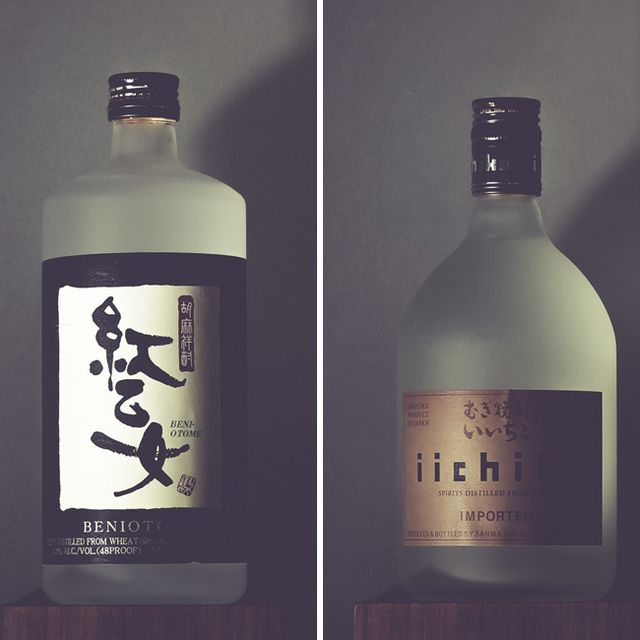By now you’ve probably heard: shochu is the new sake. Sure, it’s still taking a while for the stateside bar scene to truly catch on — a sake bar is a sake bar, so it’s not like they can just switch over — but that only gives you ample time to put yourself ahead of the curve.
For those of you who haven’t heard: shochu is a distilled spirit made from barley, sweet potatoes or rice (bottles made from each are dubbed, respectively, mugi, imo, and kome), though various other base ingredients can be used — anything from soba to sugar cane to sesame. Whereas sake, a rice wine, is fermented, shochu’s distilled nature lends itself to a wide variety of production methods. Triple distillation, as with most spirits, results in a higher-proof product appropriate for mixing, whereas more traditional single distillation brings bottle proofs to around 50, enjoyed straight, on the rocks or, as per tradition, cut 50/50 with hot water. And apart from the base ingredient and distillation, the vessel in which the shochu matures plays a big part in overall taste: steel tanks, clay pots and oak barrels all imbue the spirit with different flavor profiles.
What that means for you, the aspiring shochu connoisseur, is a wildly diverse drinking experience; you’ll taste shochus as pungent as Smirnoff and as vexingly complex as your rarest single malt. For now, acquaint yourself with the basics a select handful of more adventurous examples.
Additional editorial support provided by Susan Lee, Beverage Manager at NYC’s Morimoto.
Iichiko Silhouette Mugi Shochu
Best Barley Shochu: Iichiko is universally recognized as the go-to starter shochu. For this reason it’s widely available in stateside liquor stores. The spirit is single distilled from barley and blended with pure spring water. It’s a one-two punch that packs the bottle with grainy, sake-like notes and unparalleled smoothness, making it a worthy vodka replacement.
Jinkoo Imo Shochu
Best Sweet Potato Shochu: Sweet potato shochus tend to be off-putting to newcomers, contrary to what you might think (because sweet potatoes are delicious). Jinkoo gets it right and gives newbie drinkers what they’d expect: sweet herbal notes and a rich, buttery mouthfeel.
Kumejima’s Kumesen
Best Rice Shochu: For a crash course in the distinctions created by shochu’s various production methods and regions, try Kumejima’s Kumesen side by side with a pick like Yokaichi Kome. The former, a traditional Awamori — an Okinawan spirit made specifically from Thai long-grain indica rice — is savory and fatty, the latter more neutral, as is common for the kome style. For variety’s sake, you’ll want to go with the Kumejima.
Beniotome Sesame Shochu
Best for Branching Out: Once you’re accustomed to the basic flavors of shochu, start reaching for deeper cuts. Beniotome is a worthy first try: with a mash bill of 60 percent barley, 30 percent rice and 10 percent sesame, it’s a measured mix of common flavors, with that less common sesame component (indeed, it’s the only sesame shochu available in the US) adding a nutty sweetness distinct from what you’d find in more common chestnut-based shochus.
Keep Branching Out
Sudachi Chu: Distilled from molasses and Japanese citrus, Sudachi Chu should be mixed with club soda and lemon for a nice spin on the typically Grey Goose-based drink, says Morimoto’s Susan Lee.
Kitaya Shuzo: For this barley shochu, which is aged between 4 and 5 years in used Jim Beam or Jack Daniels barrels (depending on the bottle), the “branching out” part is a bit open to interpretation.
Towari: Soba-based shochus are plenty common — so what better way to acquaint yourself with the flavor than with a 100 percent soba mash bill like Towari’s?



















